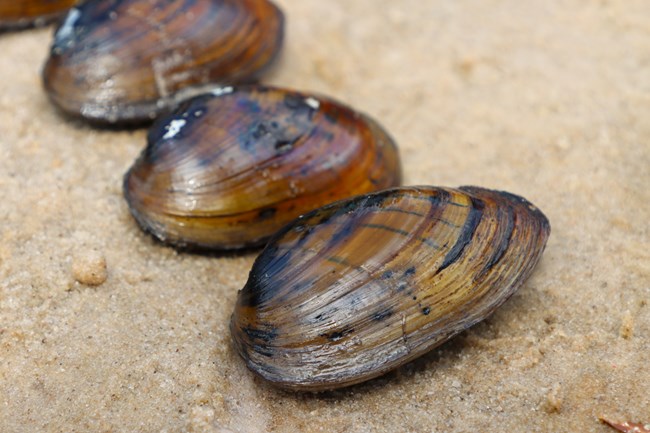|
What is a mollusk? Simply put, a mollusk is an animal that is a member of the phylum Mollusca. Found in this diverse group are familiar creatures such as snails, slugs, clams, oysters, octopuses, and squid. There is no single defining feature for a mollusk, though all have a specialized foot that allows the mollusk to move, attach, or grab. 
NPS Photo / Scott Sharaga Freshwater MusselsFreshwater mussels inhabit the bottoms of Big Thicket’s rivers, creeks, and bayous. Mussels, along with oysters and clams, are classified as “bivalves” because they have two shells which protect their internal organs. By acting as natural water filters, mussels play a large role in keeping waterways healthy for all kinds of aquatic life. 
NPS Photo / Scott Sharaga Mussel Research at Big ThicketIn the summer of 2023, park staff conducted a survey of freshwater mussels within Big Thicket National Preserve. The study helped researchers learn which species were present and which locations had the most diversity.
Mussel SpeciesResearchers observed 24 species of freshwater mussels during surveys:

NPS Photo / Scott Sharaga |
Last updated: April 28, 2025
